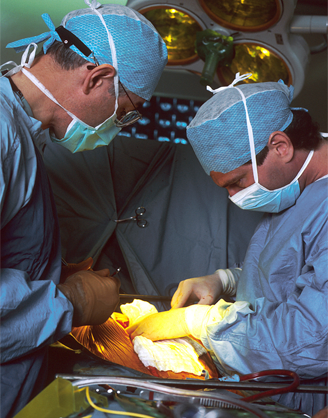Many Double Mastectomies Not Clinically Necessary
A new study shows that women diagnosed with cancer in one breast often opt to undergo a contralateral prophylactic mastectomy, even though they may not have a significant risk of developing cancer in the other breast.
Many women opt for contralateral prophylactic mastectomy, even when there is no clear benefit.

A new study shows that women diagnosed with cancer in one breast often opt to undergo a contralateral prophylactic mastectomy (CPM), even though they may not have a significant risk of developing cancer in the other breast. The women who had the more extensive surgery were more likely to have had a diagnostic MRI, to be white, to be highly educated, and to have a strong family history of ovarian or breast cancer, though not necessarily a positive genetic test. These women also reported a greater worry about recurrence.
Sarah T. Hawley, PhD, MPH, associate professor in the division of general medicine at the University of Michigan in Ann Arbor, Michigan, and colleagues used Surveillance, Epidemiology, and End Results (SEER) Program data to survey and track the surgical outcomes of 2,290 women newly diagnosed with breast cancer. The study was published in JAMA Surgery.
Of the 1,447 women who had follow-up data 4 years after their diagnosis, 18.9% had strongly considered CPM and 7.6% received it. The majority of patients (69%) who received CPM had no genetic or familial risk for being diagnosed with cancer in the other breast.
Of the 136 women who had a clinical reason to undergo CPM, 24.3% received the surgery. Eighty percent of the women who had CPM stated that the surgery was to prevent breast cancer in the other breast.
The other breast cancer patients in the analysis underwent breast conservation surgery (57.6%) or unilateral mastectomy (34.4%).
The average age of the patients included in the analysis was 59 years. Patients were from the Detroit and Los Angeles areas and were initially diagnosed between 2005 and 2007, and then surveyed again between 2009 and 2010.
According to the authors, a nonclinical factor in making the decision about a surgical procedure following a breast cancer diagnosis that is both prevalent and powerful is fear of disease recurrence. “A patient’s decision to undergo CPM based on a strong fear of recurrence in the absence of clinical indications presents an important clinical challenge for surgeons,” stated the authors.
“Our results provide evidence that decisions about CPM represent a clear case in which better strategies to increase patient knowledge about their own risk of developing contralateral cancer, as well as the net benefit of treatment, are needed and should be made only after patients are accurately informed about these issues,” the authors concluded.
Limitations of the study included a survey of breast cancer patients in urban areas only, as well as the self-reported data used for the analyses.
In an accompanying commentary, Shoshana M. Rosenberg, ScD, MPH, and Ann H. Partridge, MD, MPH, of Dana-Farber Cancer Institute in Boston, stressed that many women who opt for CPM do not have a clinical indication to receive the surgery. “While CPM might be considered overtreating women without clinical indications, it might still be the right choice for some women for risk reduction, cosmetic, and/or emotional reasons,” the authors stated. They also stressed the need for balance from both the patient and clinician in making the decision: “Not only should pros and cons of different treatment options be communicated, but there needs to be consideration of the patient’s personal circumstances and perceptions, all the while addressing anxiety and concerns about breast cancer recurrence and new primary disease (and the distinction between the two).”
Newsletter
Stay up to date on recent advances in the multidisciplinary approach to cancer.